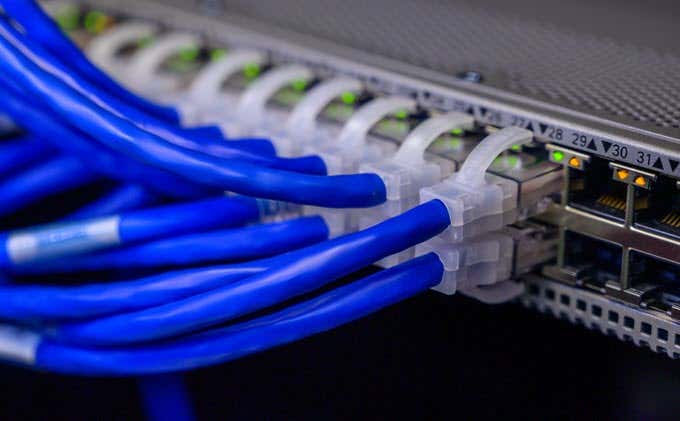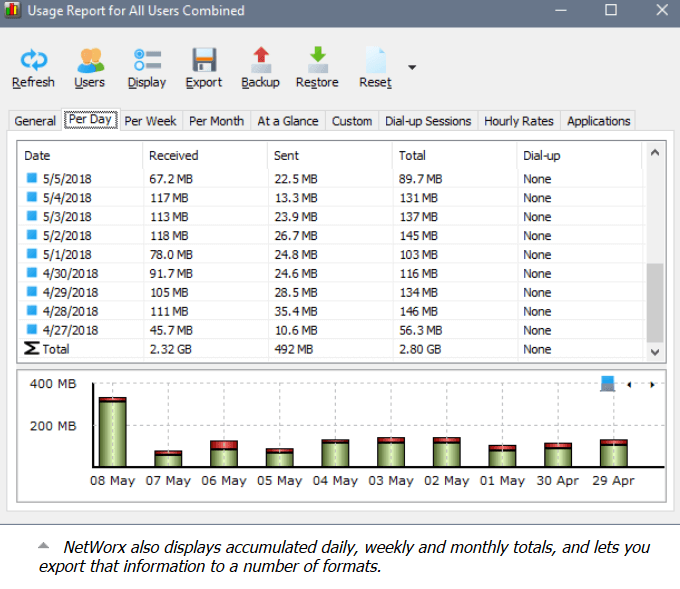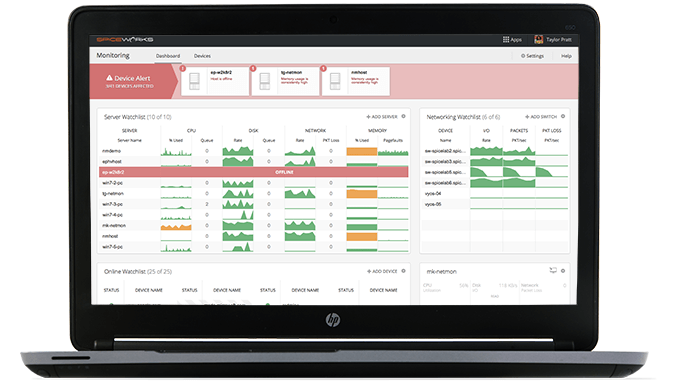Businesses use many devices that require an Internet connection, including computers, printers, and VoIP phones. But how much bandwidth do they need? This article will help businesses estimate bandwidth requirements for their business network. It will cover:
- What Is Bandwidth and Why Does it Matter?
- How Much Network Bandwidth Do You Need?
- Bandwidth Measuring Tools
- Monitor, Measure, and Manage Data Flow and Data Volume
What Is Bandwidth and Why Does it Matter?
Bandwidth is the measurement of how fast data is sent over a wireless or wired connection (measured in bits per second).
Low bandwidth is like a freeway at rush hour. Everything slows down. Just as adding additional lanes speeds up traffic, increasing bandwidth allows more data to flow.

However, correctly estimating bandwidth requirements will prevent you from paying for more than your business needs or not purchasing enough and causing a slow connection.
It’s essential to monitor a business network’s bandwidth for many reasons, including:
- Identifying Wi-Fi access points to determine potential abuse.
- Monitoring network usage helps plan for business growth when you need an upgrade in bandwidth.
- Serving as a check against Internet Service Provider (ISP) guaranteed speed to ensure you are getting the agreed-upon bandwidth you paid for.
How To Estimate Bandwidth Requirements
To estimate bandwidth requirements for a business, first access Internet usage. Next, look at your business growth forecast to ensure the Internet bandwidth will cover the increased usage needs as your company grows.
Not every activity online takes up the same bandwidth. Start by calculating the bandwidth used daily during a typical peak period and monitor which apps are using the most bandwidth.
This means the time of day when most devices connected to the internet are being used at the same time. Organize the devices used in your business based on the categories below.
- Low – 100 Kbps (kilobits per second) or less: E-fax machines, VoIP phones, laptops and computers for emailing and simple web surfing
- Medium – 100-500 Kbps: More intensive web browsing, streaming, emailing, and downloading
- High – 500Kbps – 2.0Mbps (megabits per second): Devices that use cloud-based platforms and software programs such as Customer Resource Management, Point of Sale, and Enterprise Resource Planning
- Intensive – 2.0Mbps and higher: HD video conference devices and platforms

Associate a bandwidth to every device based on which category they are in as outlined above. To calculate the typical peak bandwidth usage, determine how many hours per day each device is used.
Look at the number of employees you have or the number of people using the same network. The next step is to calculate how much time each user spends online.
One way to make this determination is to ask employees to fill out a questionnaire that asks them how much time they spend online and what they’re doing. However, that is not the most accurate method. See below for tools that measure actual bandwidth usage.
Add up the total bandwidth to get an idea of your company’s needs during peak operational time. Knowing what devices and which users consume the most data will give your business better control over usage and enable you to plan for capacity.
Bandwidth Measuring Tools
Below are several tools to help businesses monitor their traffic usage and bandwidth by a single computer or on a network.
SolarWinds® Network Performance Monitor
SolarWinds is a free real-time bandwidth tool to help users monitor the traffic on their network.

View usage on an easy-to-read graph. Users can manage the traffic on their network and:
- Monitor multiple interfaces from different devices on the same network at the same time.
- See how much bandwidth is in use and how much traffic is on each interface.
- Set critical and warning thresholds to instantly see if there are any bandwidth or other issues affecting Internet speed.
Networx
Networx is a Windows tool that enables users to monitor network traffic locally and view the traffic for each networked device.

The FREEWare license is not a fully-featured tool. However, it does provide valuable data to help identify possible sources of problems, ensure that businesses don’t exceed bandwidth limits, and track down suspicious activity.
Spiceworks
Spiceworks is a free, simple, and easy-to-use network monitoring tool. Set alerts to catch problems before users notice.

Not only is the tool itself free, so is the support. Get real-time updates on switches, servers, and any IP device. Spiceworks is designed for businesses that monitor less than 25 devices.
Monitor, Measure, and Manage Data Flow and Data Volume
In today’s digital world, everything is about bandwidth. Businesses pay an Internet Service Provider (ISP) for the amount of bandwidth they’re using.
Without managing how your bandwidth is consumed, you could negatively affect your internet experience. If your internet access has a data cap, going over the allotted bandwidth can cost a lot of money, slow down your connection speed, or both.
By measuring and monitoring internet connection speed, you can:
- Be assured you are getting what you’re paying for
- Identify bandwidth hogs to manage their consumption
- Make tweaks to deliver the best network performance
Test Your Internet Speed
Verify that your ISP is providing the speed you’re paying for in your package. There are third-party websites to test your Internet speed, such as Speedtest.net.

Speeds can vary depending upon the time of day, so test several different times (evenings and weekends usually have more traffic). Check your baseline results against the speed in the package you’re paying for from your ISP. If the speed is significantly lower, call your provider and ask them to check things on their end.
After you get an idea of how much bandwidth your business needs, you will be better able to make an informed decision and estimate your bandwidth requirements when choosing a service plan.
It’s better to pay for a little more bandwidth than you need to give your business a cushion. Also, to plan for the future growth of your company and increased bandwidth needs, try to find a flexible plan that can be scaled up when your business grows.